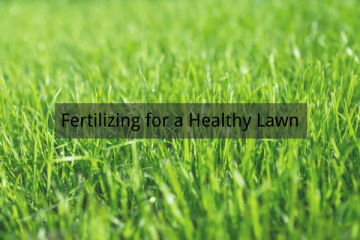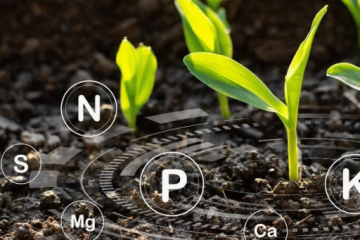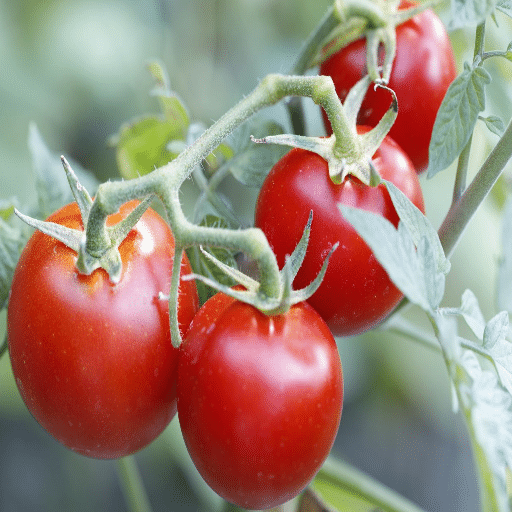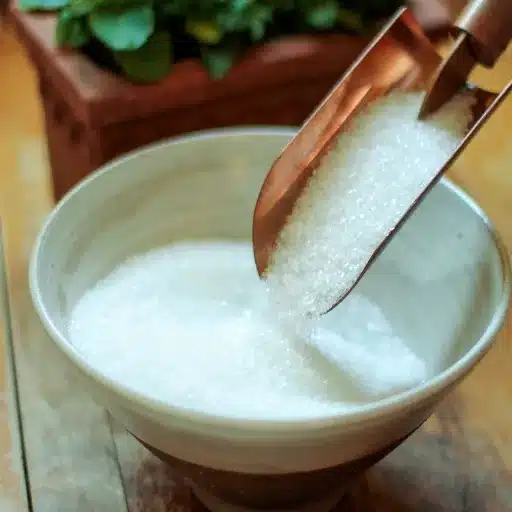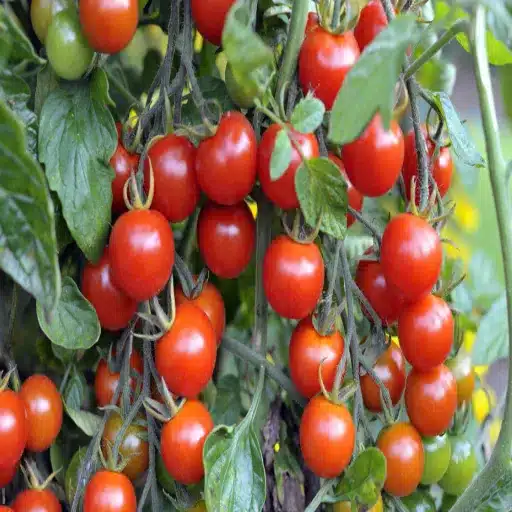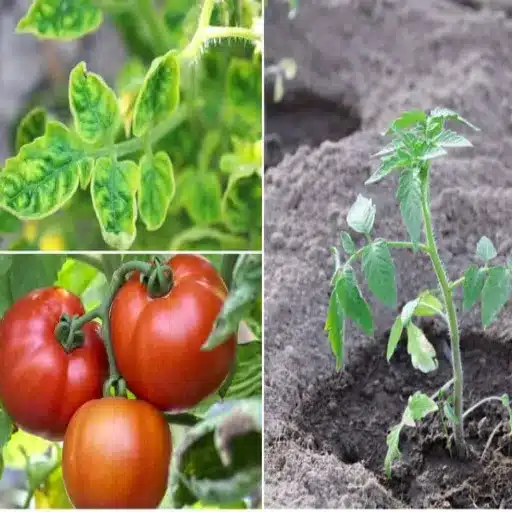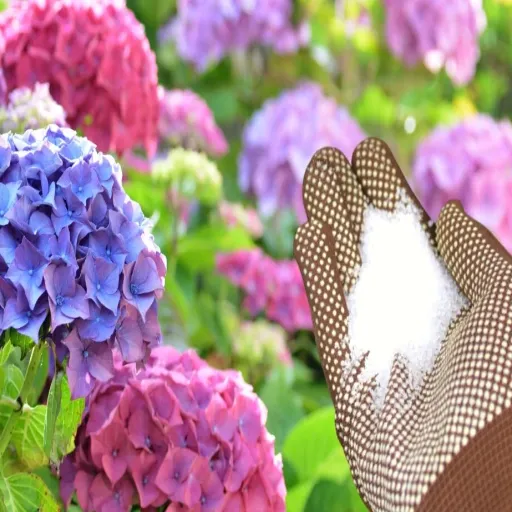Growing healthy, vibrant tomato plants requires more than just sunlight and water—understanding the role of nutrients is key to optimizing your harvest. One often-overlooked gardening secret is the use of Epsom salt, a simple yet highly effective supplement that can promote plant growth, prevent deficiencies, and enhance the flavor of your tomatoes. But how exactly does Epsom salt benefit tomato plants, and how often should it be applied for maximum results? This guide will provide detailed insights into why Epsom salt is a game-changer for tomato gardening and offer precise instructions for its proper use.
How Often Should I Apply Epsom Salt to My Tomato Plants?
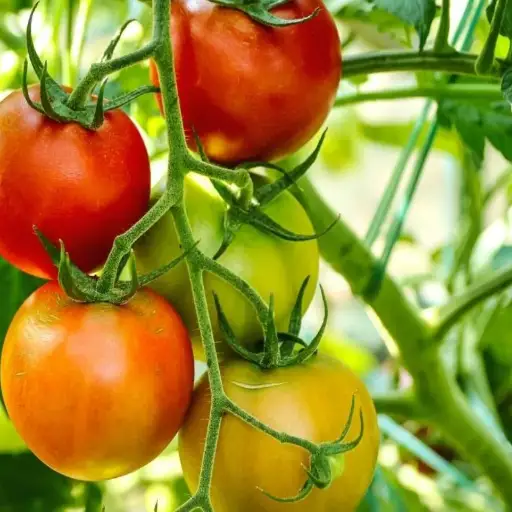
Recommended Application Schedule During Growing Season
For Epsom salt to be useful with tomato plants, using it at the correct times is vital. Furthermore, it is suggested to do two-week intervals of Epsom salt application during the growing period. Epsom salt solution should be prepared by dissolving a tablespoon of salt in a gallon of water and pouring it at the bottom of every plant’s stem. For large-scale gardens, proportionate scaling of the solution will ensure that all plants get equal treatment.
Exams illustrate that the application should be started early in the growing season, which should ideally be when the blossoms begin to show up, as the magnesium in Epsom salt helps to aid flower and fruit formation. For other maintenance measures, foliar feeding can also be added. It consists of one tablespoon of Epsom salt added to a gallon of water, and then it is poured directly on the leaves of the plant for better, faster nutrient absorption. Foliar methods should be used alongside root feeding and are recommended at four to six-week intervals to provide nutrition when needed.
Furthermore, testing the soil before planting can reveal its magnesium levels. If the soil already has sufficient magnesium, the overapplication of Epsom salt should be avoided since it could lead to an imbalance of other nutrients and complications like salt accumulation in the soil. Actively tracking the health of the plants during the growing season will guarantee that the applications made are nurturing and adaptable to the plants’ necessities.
Differences Between Soil Applications and Foliar Spray Frequency
When deciding whether to use soil applications or foliar sprays to provide nutrients, each method has specific ways to be implemented based on how plants absorb materials. To maximize soil application efficiency, plants should be provided with nutrients in a sustained and slow manner, allowing the soil to serve as a reservoir. For the nutrient type and soil profile selected, such applications need only be made infrequently, as the soil functions as a reservoir, slowly supplying the roots with the needed nutrients.
In comparison, foliar sprays should be made when immediate absorption through the plant’s leaves is required, for example, when addressing acute deficiencies that require a swift resolve. To overcome the challenges posed by the environment, foliar sprays need to be placed more frequently, sometimes every week, due to the limited capacity of foliage that these leaves have for storing nutrients. Foliar sprays are more effective if applied in the early morning or later parts of the day when the air is cooler to minimize the loss of spray through evaporation and increase the amount absorbed.
The effectiveness of every strategy encompasses factors such as the kind of nutrient, the species of plant, and the prevailing climate. Primary nutrients like nitrogen are usually more efficient when provided through the soil as they tend to have a long-standing high demand, whereas secondary nutrients such as iron or zinc are often better applied with foliar sprays for rapid deficiency antidoting. If done accurately, addressing both methods together can fulfill the requirements of nutrient accessibility and plant health, which will result in sustained growth.
What Are the Signs My Tomato Plants Need Epsom Salt?

Identifying Magnesium Deficiency in Tomato Plant Foliage
Identifying magnesium deficiency in tomato plants is a common problem that can show through prominent symptoms in a plant’s foliage. One of its key symptoms is the interveinal chlorosis, which occurs when the vein areas in leaves turn yellow while the interveinal parts remain green. Interveinal chlorosis starts first in the older leaves because magnesium is a mobile nutrient, and during times of stress, the plant reallocates it to younger, actively growing tissues. Further lack of magnesium may lead to leaf curling, browning of margins, and may even lead to premature leaf drop.
Deficiencies of magnesium have many side effects, the most acute of them is interference with the critical processes of photosynthesis, as magnesium is the vital pigment of chlorophyll. Not just that, the nutritional profile of the plant would also be greatly impaired in pre-hepatic duct oxygen transportation, both in the quantitative measure as well as in terms of efficiency of physiologic function. Quantitative soil examination can accurately reflect data in terms of magnesium content, where anything below 20 ppm would be in dire need, alongside severe soil erosion due to a lack of supplementation.
As for natural influences, pH lower than 6.0 (acidic soils), too much potassium, or excessive potassium or calcium applications greatly worsen the lack of available magnesium. Magnesium sulfate (Epsom Salt) is provided as a soil treatment or a foliar spray, with the latter allowing for rapid correction in more critical areas. Typically, the best results are obtained when the compounds are made at the rate of 1 to 2 tablespoons of salt per gallon of water and applied until the symptoms are relieved.
How to Distinguish Between Magnesium Deficiency and Other Nutrient Issues
Plants show distinct magnesium deficiency symptoms, but blending it with other nutrient deficiencies requires deep knowledge of physiological signs and patterns of plant growth. One major symptom of magnesium deficiency is manifesting as interveinal chlorosis, where yellowing of the tissue in the leaf occurs while the veins remain green. This is more prominent in the older leaves because magnesium is a mobile nutrient. This means a plant can transport magnesium in a period of scarcity to newer growth.
In contrast, nitrogen deficiency could also cause yellowing of older leaves. However, this involves uniformly and evenly yellowing leaves throughout unlike the interveinal pattern. Iron, on the other hand, is also immobile which means it only chlorosis in younger leaves.
Fresh magnesium levels in the plant system can be ascertained accurately through soil testing and tissue analysis, which are advanced diagnostic techniques. Soil testing indicates magnesium availability, which is generally the case with potassium, calcium, and the pH level of the soil, since these greatly affect the uptake of magnesium. Tissue analysis, on the other hand, measures the amount of magnesium in a plant, thereby facilitating directed actions.
To prevent misdiagnosis, it is necessary to clinically assess the changes in symptoms, noting growth stages and recent fertilization or environmental factors. Diagnosis accuracy ensures that corrective actions appropriate to the specific nutrient deficiency are applied.
Common Causes of Magnesium Deficiency in Tomato Plants
The primary factors controlling the magnesium nutrition of tomato plants are related to the imbalance of the nutrient composition in soils and environmental factors. Middle to sandy or acidic soil types are usually low in magnesium, and so is the nutrient retention capacity, which is likely to lead to magnesium deficiency. Moreover, high amounts of potassium, calcium, or ammonium might also create antagonism with magnesium, as these nutrients tend to outcompete magnesium at the roots for uptake. Compounding these factors is improper use of fertilizers that are rich in potassium and ammonium, where the overuse of these substances aggravates the already low magnesium issue.
Such environmental factors as extended periods of dry or waterlogged conditions have a marked impact on the sap for magnesium. These factors tend to interfere with the effective absorption and translocation of nutrients by the plant. Other factors, such as extremes of high and low temperatures, tend to slow down the processes of magnesium metabolism in plant tissues, thus delaying physiologic processes that make hinges of the plant. In addition, magnesium bears the brunt in balance with sufficient water and energy, which makes it not mobile, and thus gives rise to the diseased state, which compounds the problem from being even worse during the time of high fruit bearing and rapid vegetative growth periods.
Having knowledge of these factors enables farmers to introduce specific measures tailored to combat magnesium deficiency, supporting healthy development of crops such as soil exploitation, control of water runoff, and correct application of fertilizers.
What’s the Correct Way to Use Epsom Salt on Tomatoes?

Soil Application Methods: How Much Epsom Salt Per Foot of Plant
For the application of Epsom salt to aid the growth of tomato plants, it is necessary to apply it with moderate precision and depth depending on the plant’s growth stage. For general upkeep, it is usually suggested that the plant’s height in feet be proportioned to the number of tablespoons of salt added, meaning 1 tablespoon of salt is added for each foot of height. This system ensures that magnesium and sulfur are kept at sufficient levels for the roots to absorb them without throwing the balance of soil nutrients off.
During some periods of rapid growth or with some magnesium deficiency symptoms, for example, interveinal chlorosis or even curling of leaves, a higher concentration is needed. Some prescriptions recommend dissolving up to 2 tablespoons in a gallon of water, adding this solution directly to the soil at the bases of the plants’ stems. This method enhances the ability of the solution to reach deeper sections of soil, encouraging better plant growth.
Equally important however is the balance of pH and texture of the soil which determines the speed at which magnesium and sulfur can be drawn. Soils that have a basic amount of magnesium can and are encouraged to be treated with Epsom salt. Applying salt in excess has been shown to cause competition to arise, where magnesium will stop calcium or potassium from being absorbed causing harm to the plant.
Making and Applying Foliar Spray with Epsom Salt Per Gallon of Water
For an effective foliar spray containing magnesium and sulfur, dissolve Epsom salt in water at a ratio of 1 to 2 tablespoons per gallon of water; stir thoroughly. Failing to follow these recommendations may create conditions where foliar burn or other forms of damage might occur. It is best to start with warm water to ensure the Epsom salts dissolve completely and are uniformly dispersed within the solution.
For the best effect, the spray should be applied during the cooler parts of the day, at around early morning or later at sunset, to ensure no evaporation takes place and the nutrients are absorbed fully. Direct application of the spray to the lower part of the leaves is imperative since most of the Stomata which are responsible for the sucking-in of nutrients are located there. Studies indicate that for the best effects in soils low in Magnesium, the application should be done every two weeks during the growing season.
Steer clear of over-application since a surplus of magnesium can lead to nutrient insufficiency which may stop the plant from absorbing required Calcium and Potassium for its growth and fruiting. Intensive monitoring of the plants as well as the soils nutrient levels has to be advised in order to change how frequently the application is made along with the concentration.
When to Add Epsom Salts in the Hole During Planting
Some crops that have a high need for magnesium, like tomatoes, peppers, and roses, benefit from the addition of Epsom salts during planting. This practice guarantees that plants have magnesium sulfate on hand from the beginning, which allows for optimal growth and nutrient uptake. The salts need to be placed in the planting hole so they can be directly reached by the roots as they develop. Generally, one to two tablespoons of Epsom salts per planting hole is sufficient, but this figure may change based on soil tests and the plant’s magnesium needs.
It is important to consider when to apply the Epsom salts. Adding the salt at the very beginning of the planting process is ideal because magnesium is an important contributor to chlorophyll synthesis which means photosynthesis will happen at a much higher rate. This allows seedlings and transplants to begin their growth cycle enhance energy production and nutrient efficiency. Soil conditions must be monitored very closely because too much magnesium can cause problems with calcium and potassium, other essential nutrients, leading to a deficiency or unwanted competition.
Incorporating Epsom salts in planting methods requires the consideration of soil testing data prior. Looking deeply into the soil will provide information on what nutrients it currently has, and if there is a need for magnesium to be added. Depending on how much Epsom salt is used, it could be detrimental to the environment, because water reserves such as groundwater might get polluted, making soil erosion a potential hazard. Therefore, crop yield and health, as well as the ecosystem balance, can be maintained by applying Epsom salt.
Can Too Much Epsom Salt Harm My Tomato Plants?
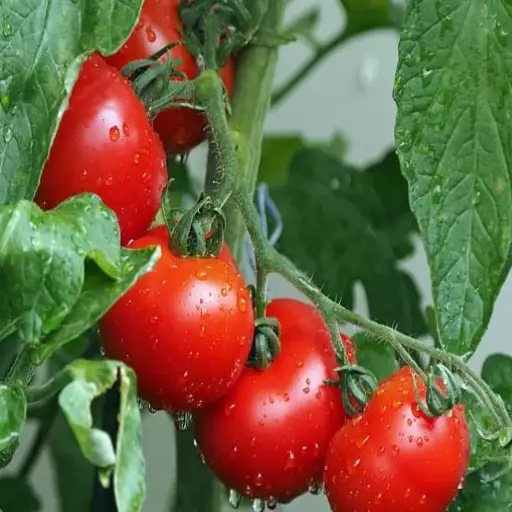
Signs of Epsom Salt Overuse in Your Vegetable Garden
Instead of achieving its intended purpose, an overindulgence of Epsom salt in the garden, especially on tomato plants, can lead to a plethora of unwanted effects. It is manifesting due to calcium and potassium not being absorbed due to ‘oversaturation’ of magnesium, which stunts the intake of various nutrients. Flowers on tomatoes are also affected, as they are devoid of much-needed calcium. Calcium deficiency leads to disorders like blossom end rot, which further gives way to dark patches on the surface of the fruit.
Moreover, scientists have found a relationship between too much Epsom salt and the changes in soil structure. These parenting deficiencies can knock some sense into the soil and water retention capabilities, leading to dry, compacted soil. The cycles that are fueled by microbes can rot in certain conditions, making the soil barren over time. These systems need to be controlled in defined waters as well, since it is needed to keep magnesium and other minerals from flooding into groundwater and eutrophication.
To ensure crops and other botanicals blend into their ecological role, moderation can maintain the balance through less sophisticated methods like monitoring magnesium levels. The correct way of filling in the gaps is by using strategies which revolves around data based analysis.
How Excess Magnesium Affects Nitrogen and Potassium Uptake
Excess magnesium in soil remains an issue of cation imbalance alongside other nutrients, inclusive of nitrogen and potassium that are vital in plant growth. Compulsory harvesting of plants, however, tends to amplify the competition of the soil for cations such as potassium (K⁺) and calcium (Ca²⁺), which are required by the plants. Due to this cationic rivalry, optimal ratios essential during healthy plant metabolism may not be attained. Such circumstances lead to impaired photosynthesis as well as regulation of water and cellular function across the biological scope of the plants, which impede growth.
Additionally, magnesium is associated with detrimental effects on soil permeability and compaction, resulting in hindered nitrogen supply within the desired root zone. Nitrates (NO₃⁻) are deemed to be highly mobile and derived from other nutrients, and magnesium is known for its metagenic compound that severely impedes soil drainage systems. Denitrification, an outcome of magnesium-induced drainage, transforms bioavailable nitrogen into gaseous forms purged into the atmosphere, leading to a loss of accessible gases for plant absorption.
To lessen these effects, cation balance requirements could be maintained through periodic soil testing and targeted lime application. Furthermore, the incorporation of precision agriculture can facilitate constant monitoring of magnesium concentrations, enabling interventions protective of soil and nutrient balance.
When to Avoid Using Epsom Salt on Tomatoes
Even though Epsom salt (Magnesium sulfate) can be useful in some agricultural situations, there are specific contexts in which its application on tomatoes is detrimental. An imbalance of nutrients in soil, competing for a plant’s calcium, can arise from excessive application of Epsom salt. This causes nutrient imbalances in soil, which creates issues such as blossom end rot in tomatoes; a critical ailing disorder stems from the deficiency of calcium at the growing point of the tomato fruit.
Moreover, worsening these conditions by using Epsom salt indiscriminately in already magnesium-rich soils can lead to heightened toxicity levels, which impedes plant growth. To ensure that Epsom salt is used optimally, soil testing is vital in determining magnesium levels. In opposition to these suggestions, stop using it if symptoms such as richly dark, green foliage devoid of fruitful outgrowth appear. These suggest exceeding magnesium levels.
In tandem with other strategies, including soil amendment or composting and balanced fertilization, using Epsom salt in isolation often address a wide range of deficiencies. These practices with Epsom salt are helpful for maintaining the health of soil in the long run, whilst mitigating the risks associated with potential nutrient imbalances.
Should I Use Epsom Salt Instead of Regular Fertilizer?

Comparing Epsom Salt to Complete Tomato Fertilizers
Epsom salt, or magnesium sulfate, adds magnesium and sulfur to the soil in a precise manner. This becomes particularly useful when there are soil tests conducted for these nutrients, given that they aid in the photosynthesis process and overall health of the plant. Nonetheless, Epsom salt does not act as a comprehensive fertilizer because it lacks magnesium, nitrogen (N), phosphorus (P), and potassium (K), the primary nutrients that assist in the healthy growth of tomato plants.
Complete tomato fertilizers, on the other hand, are readily available as composites with an insured balance ratio of N-P-K, that actively allow for the flowering and a multitude of other processes alongside protection against pests, diseases, and aid in the growth of micro-nutrients. Unlike Epsom salts, holistic complete fertilizers eliminate the need for extra supplements for achieving holistic nutrient demands address nutrient needs carefully thought out.
Even though Epsom salts can be used for a specific nutritional deficiency through targeted fertilization, it should not replace the all-encompassing diet given by balanced fertilizers. To be more efficient, Epsom salt should be used as an amendment, not going off a standalone solution paradigm, ideally from soil tests and indicators depicting the health of the plant. If used alongside other fertilizers of broad-spectrum coverage, these salts can offer additional targeted benefits, ensuring an optimal holistic approach to soil and plant management while minimizing risks of over-fertilization or nutrient imbalance.
Combining Epsom Salt with Other Nutrients Tomato Plants Need
Tomato plants need a wide variety of essential nutrients to grow, including nitrogen, phosphorus, potassium, calcium, sulfur, magnesium, and trace elements such as iron and zinc. While epsom salt helps with magnesium and sulfur needs specific for chlorophyll production and protein synthesis in tomatoes, it doesn’t act as a fertilizer. Epsom salt contains magnesium sulfate, which provides the necessary nutrients, but to have comprehensive effects, other fertilizers must be added.
In addition to other fertilizers, Epson salt must be added for optimal growth results. To promote healthy foliage development, nitrogen sources like ammonium nitrate and urea have to be added. Bone meal and monoammonium phosphate aid in supporting root development in addition to cultivating flowers. Moreover, potassium sulfate and potassium nitrate encourage disease resistance as well as fruit development. To prevent blossom-end rot and nutritional deficiency of calcium, dolomitic lime and calcium nitrate can help provide strong cell wall formation.
It is very important to combine Epsom salt with these nutrients in the correct ratios. Make sure you conduct soil tests prior, because adding too much magnesium can impair calcium uptake, disrupting the nutrient balance. Overabundance of magnesium can antagonize calcium uptake, therefore, soil tests should guide decisions. Supplementary soil amendments, like magnesium-sulfate foliar sprays, can be applied during periods of high magnesium demand at a concentration of 1-2%. This technique allows for soil buildup to be minimized while still offering great plant nutrient absorption. Epsom salt, in combination with a carefully tailored nutrient program aimed towards the specific wants and needs of the tomato plants, will help growers maximize yield and plant health.
References
Frequently Asked Questions (FAQs)
Q: Why should I perform a soil test before using Epsom salt for tomato plants?
A: A soil test is crucial before applying Epsom salt because it tells you whether your soil lacks magnesium and sulfur. Many gardeners apply Epsom salt unnecessarily, which can create nutrient imbalances. The test provides information about your soil pH and existing nutrient levels, helping you determine if Epsom salt is truly needed. If your soil already contains sufficient magnesium, adding more could inhibit the absorption of other important nutrients, potentially harming your tomato plants rather than helping them.
Q: How does sulfur in Epsom salt benefit tomato plants?
A: Sulfur is an essential element that tomato plants need for healthy growth. As a component of Epsom salt (magnesium sulfate), sulfur helps with protein production in the plant, enhances chlorophyll formation, and improves overall plant health. It contributes to the development of enzymes and vitamins within the plant, strengthens plant cell walls, and helps tomatoes resist disease. Sulfur also assists in seed germination and fruit development, making it particularly valuable at planting time and during the fruiting stage.
Q: How often should I apply Epsom salt to my tomato plants?
A: For established tomato plants, apply Epsom salt every two weeks during the growing season. When starting, use 1 tablespoon of Epsom salts dissolved in a gallon of water and apply around the base of the plant. For maintenance, you can treat plants every two weeks with a foliar spray or soil drench. However, frequency should be reduced if you notice any negative plant responses or if your soil test indicates adequate magnesium levels. Remember that over-application can be harmful to plants, so it’s better to apply less frequently than to overdo it.
Q: Can I use Epsom salt for plants other than tomatoes?
A: Yes, Epsom salt for plants extends beyond just tomatoes. It’s particularly beneficial for tomatoes and pepper plants, as both belong to the nightshade family and have similar nutrient requirements. Many gardeners successfully use it for peppers and tomatoes to address magnesium deficiency symptoms. It can also benefit roses, potatoes, and leafy greens. However, not all plants need additional magnesium, so research specific plant needs before application. Always dilute properly and consider a soil test before widespread application across your garden.
Q: What’s the best way to dilute and apply Epsom salt to tomato plants?
A: To properly dilute Epsom salt, mix 1 tablespoon of Epsom salt per gallon of water for regular applications. You can apply this solution in two ways: as a soil drench by pouring it around the base of the plant, ensuring it reaches the root zone while maintaining proper soil moisture; or as a foliar spray by filling a spray bottle with the solution and misting the leaves. For the foliar application, spray in the early morning or evening to prevent leaf burn. Both methods allow tomato plants to absorb magnesium and sulfur efficiently.
Q: What are the signs that my tomato plants need Epsom salt?
A: Look for yellowing leaves (chlorosis) between the leaf veins while the veins remain green, which is a classic sign of magnesium deficiency. Other indicators include curling leaves, stunted growth, and poor fruit production. Since Epsom salt is magnesium sulfate, it directly addresses these deficiencies. These symptoms often appear first on older, lower leaves and progress upward. Before applying, however, confirm with a soil test that magnesium deficiency is the problem, as similar symptoms can be caused by other issues that Epsom salt won’t fix.
Q: Can too much Epsom salt be harmful to tomato plants?
A: Yes, excessive Epsom salt can be harmful to plants. Despite its reputation as a natural mineral supplement, overuse can create nutrient imbalances, particularly with calcium and potassium, both critical for tomato development. Too much magnesium can block the uptake of these nutrients, leading to issues like blossom end rot. Excessive applications may also increase soil salinity, stressing plants and reducing water uptake. Follow recommended dosages (typically 1 tablespoon per gallon of water applied every two weeks) and perform a soil test before starting regular applications.
Q: Can I put Epsom salt directly in the planting hole when transplanting tomatoes?
A: Yes, you can add Epsom salt directly to the planting hole, which many gardeners do to provide magnesium at planting time. Add about 1 tablespoon of Epsom salt to the bottom of the hole before transplanting, and mix it slightly with the soil. This gives young tomato plants immediate access to magnesium sulfate, which supports early root development and helps prevent early magnesium deficiency. However, only do this if you know your soil lacks magnesium based on a soil test, as excess magnesium at this critical stage could interfere with the absorption of other important nutrients.
Q: How does Epsom salt help tomatoes develop better flavor and more abundant fruits?
A: Epsom salt can improve tomato flavor and yield because magnesium is an important nutrient for fruit development and chlorophyll production. Magnesium activates enzymes necessary for plants to produce carbohydrates and sugars, which enhances fruit flavor. Proper magnesium levels also support photosynthesis, giving plants more energy to develop fruit. Additionally, magnesium strengthens plant cell walls, resulting in firmer, more disease-resistant tomatoes. When plants receive adequate magnesium, they can allocate more resources to fruit production rather than just survival, potentially leading to a more abundant harvest.

